RBS 2010 Annual Report Download - page 202
Download and view the complete annual report
Please find page 202 of the 2010 RBS annual report below. You can navigate through the pages in the report by either clicking on the pages listed below, or by using the keyword search tool below to find specific information within the annual report.-
 1
1 -
 2
2 -
 3
3 -
 4
4 -
 5
5 -
 6
6 -
 7
7 -
 8
8 -
 9
9 -
 10
10 -
 11
11 -
 12
12 -
 13
13 -
 14
14 -
 15
15 -
 16
16 -
 17
17 -
 18
18 -
 19
19 -
 20
20 -
 21
21 -
 22
22 -
 23
23 -
 24
24 -
 25
25 -
 26
26 -
 27
27 -
 28
28 -
 29
29 -
 30
30 -
 31
31 -
 32
32 -
 33
33 -
 34
34 -
 35
35 -
 36
36 -
 37
37 -
 38
38 -
 39
39 -
 40
40 -
 41
41 -
 42
42 -
 43
43 -
 44
44 -
 45
45 -
 46
46 -
 47
47 -
 48
48 -
 49
49 -
 50
50 -
 51
51 -
 52
52 -
 53
53 -
 54
54 -
 55
55 -
 56
56 -
 57
57 -
 58
58 -
 59
59 -
 60
60 -
 61
61 -
 62
62 -
 63
63 -
 64
64 -
 65
65 -
 66
66 -
 67
67 -
 68
68 -
 69
69 -
 70
70 -
 71
71 -
 72
72 -
 73
73 -
 74
74 -
 75
75 -
 76
76 -
 77
77 -
 78
78 -
 79
79 -
 80
80 -
 81
81 -
 82
82 -
 83
83 -
 84
84 -
 85
85 -
 86
86 -
 87
87 -
 88
88 -
 89
89 -
 90
90 -
 91
91 -
 92
92 -
 93
93 -
 94
94 -
 95
95 -
 96
96 -
 97
97 -
 98
98 -
 99
99 -
 100
100 -
 101
101 -
 102
102 -
 103
103 -
 104
104 -
 105
105 -
 106
106 -
 107
107 -
 108
108 -
 109
109 -
 110
110 -
 111
111 -
 112
112 -
 113
113 -
 114
114 -
 115
115 -
 116
116 -
 117
117 -
 118
118 -
 119
119 -
 120
120 -
 121
121 -
 122
122 -
 123
123 -
 124
124 -
 125
125 -
 126
126 -
 127
127 -
 128
128 -
 129
129 -
 130
130 -
 131
131 -
 132
132 -
 133
133 -
 134
134 -
 135
135 -
 136
136 -
 137
137 -
 138
138 -
 139
139 -
 140
140 -
 141
141 -
 142
142 -
 143
143 -
 144
144 -
 145
145 -
 146
146 -
 147
147 -
 148
148 -
 149
149 -
 150
150 -
 151
151 -
 152
152 -
 153
153 -
 154
154 -
 155
155 -
 156
156 -
 157
157 -
 158
158 -
 159
159 -
 160
160 -
 161
161 -
 162
162 -
 163
163 -
 164
164 -
 165
165 -
 166
166 -
 167
167 -
 168
168 -
 169
169 -
 170
170 -
 171
171 -
 172
172 -
 173
173 -
 174
174 -
 175
175 -
 176
176 -
 177
177 -
 178
178 -
 179
179 -
 180
180 -
 181
181 -
 182
182 -
 183
183 -
 184
184 -
 185
185 -
 186
186 -
 187
187 -
 188
188 -
 189
189 -
 190
190 -
 191
191 -
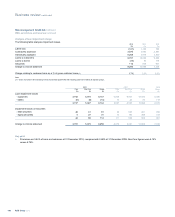 192
192 -
 193
193 -
 194
194 -
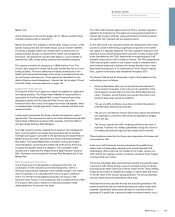 195
195 -
 196
196 -
 197
197 -
 198
198 -
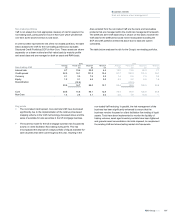 199
199 -
 200
200 -
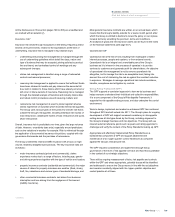 201
201 -
 202
202 -
 203
203 -
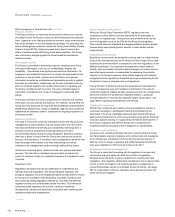 204
204 -
 205
205 -
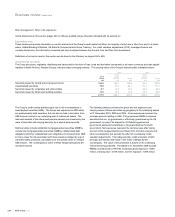 206
206 -
 207
207 -
 208
208 -
 209
209 -
 210
210 -
 211
211 -
 212
212 -
 213
213 -
 214
214 -
 215
215 -
 216
216 -
 217
217 -
 218
218 -
 219
219 -
 220
220 -
 221
221 -
 222
222 -
 223
223 -
 224
224 -
 225
225 -
 226
226 -
 227
227 -
 228
228 -
 229
229 -
 230
230 -
 231
231 -
 232
232 -
 233
233 -
 234
234 -
 235
235 -
 236
236 -
 237
237 -
 238
238 -
 239
239 -
 240
240 -
 241
241 -
 242
242 -
 243
243 -
 244
244 -
 245
245 -
 246
246 -
 247
247 -
 248
248 -
 249
249 -
 250
250 -
 251
251 -
 252
252 -
 253
253 -
 254
254 -
 255
255 -
 256
256 -
 257
257 -
 258
258 -
 259
259 -
 260
260 -
 261
261 -
 262
262 -
 263
263 -
 264
264 -
 265
265 -
 266
266 -
 267
267 -
 268
268 -
 269
269 -
 270
270 -
 271
271 -
 272
272 -
 273
273 -
 274
274 -
 275
275 -
 276
276 -
 277
277 -
 278
278 -
 279
279 -
 280
280 -
 281
281 -
 282
282 -
 283
283 -
 284
284 -
 285
285 -
 286
286 -
 287
287 -
 288
288 -
 289
289 -
 290
290 -
 291
291 -
 292
292 -
 293
293 -
 294
294 -
 295
295 -
 296
296 -
 297
297 -
 298
298 -
 299
299 -
 300
300 -
 301
301 -
 302
302 -
 303
303 -
 304
304 -
 305
305 -
 306
306 -
 307
307 -
 308
308 -
 309
309 -
 310
310 -
 311
311 -
 312
312 -
 313
313 -
 314
314 -
 315
315 -
 316
316 -
 317
317 -
 318
318 -
 319
319 -
 320
320 -
 321
321 -
 322
322 -
 323
323 -
 324
324 -
 325
325 -
 326
326 -
 327
327 -
 328
328 -
 329
329 -
 330
330 -
 331
331 -
 332
332 -
 333
333 -
 334
334 -
 335
335 -
 336
336 -
 337
337 -
 338
338 -
 339
339 -
 340
340 -
 341
341 -
 342
342 -
 343
343 -
 344
344 -
 345
345 -
 346
346 -
 347
347 -
 348
348 -
 349
349 -
 350
350 -
 351
351 -
 352
352 -
 353
353 -
 354
354 -
 355
355 -
 356
356 -
 357
357 -
 358
358 -
 359
359 -
 360
360 -
 361
361 -
 362
362 -
 363
363 -
 364
364 -
 365
365 -
 366
366 -
 367
367 -
 368
368 -
 369
369 -
 370
370 -
 371
371 -
 372
372 -
 373
373 -
 374
374 -
 375
375 -
 376
376 -
 377
377 -
 378
378 -
 379
379 -
 380
380 -
 381
381 -
 382
382 -
 383
383 -
 384
384 -
 385
385 -
 386
386 -
 387
387 -
 388
388 -
 389
389 -
 390
390 -
 391
391 -
 392
392 -
 393
393 -
 394
394 -
 395
395 -
 396
396 -
 397
397 -
 398
398 -
 399
399 -
 400
400 -
 401
401 -
 402
402 -
 403
403 -
 404
404 -
 405
405 -
 406
406 -
 407
407 -
 408
408 -
 409
409 -
 410
410 -
 411
411 -
 412
412 -
 413
413 -
 414
414 -
 415
415 -
 416
416 -
 417
417 -
 418
418 -
 419
419 -
 420
420 -
 421
421 -
 422
422 -
 423
423 -
 424
424 -
 425
425 -
 426
426 -
 427
427 -
 428
428 -
 429
429 -
 430
430 -
 431
431 -
 432
432 -
 433
433 -
 434
434 -
 435
435 -
 436
436 -
 437
437 -
 438
438 -
 439
439 -
 440
440 -
 441
441 -
 442
442 -
 443
443 -
 444
444 -
 445
445
 |
 |

Risk management: Operational risk* continued
Through the three lines of defence model the Group obtains assurance
that the standards in the GPF are being adhered to. GPF defines
requirements for testing and gathering evidence which demonstrates that
each division and function is appropriately controlled.
GPF is owned and managed by the Group’s operational risk function and
relies upon the operational risk framework for effective implementation
and ongoing maintenance.
Three lines of defence model
To ensure appropriate responsibility is allocated for the management, reporting and escalation of operational risk, the Group operates a three lines of
defence model which outlines principles for the roles, responsibilities and accountabilities for operational risk management.
1st line of defence
The business
2nd line of defence
Operational risk
3rd line of defence
Group Internal Audit
Accountable for the ownership and day-to-day
management and control of operational risk.
Responsible for implementing processes in
compliance with Group policies.
Responsible for testing key controls and
monitoring compliance with Group policies.
Responsible for the implementation and
maintenance of the operational risk framework,
tools and methodologies.
Responsible for oversight and challenge on the
adequacy of the risk and control processes
operating in the business.
Responsible for providing independent
assurance on the design, adequacy and
effectiveness of the Group’s system of internal
controls.
The Group’s Operational Risk Policy Standards (ORPS) are incorporated
in the GPF. They provide the direction for delivering effective operational
risk management and are designed to enable the consistent identification,
assessment, management, monitoring and reporting of operational risk
across the Group.
The three lines of defence model and the ORPS apply throughout the
Group and are implemented taking into account the nature and scale of
the underlying business. The following key operational risk management
techniques are included in the ORPS;
xRisk and control assessments: business units identify and assess
operational risks to ensure that they are effectively managed,
prioritised, documented and aligned to risk appetite;
xScenario analysis: scenarios for operational risk are used to assess
the possible impact of extreme but plausible operational risk loss
events. Scenario assessments provide a forward looking basis for
managing exposures that are beyond the Group’s risk appetite;
xLoss data management: each business unit’s internal loss data
management process captures all operational risk loss events above
certain minimum thresholds. The data is used to enhance the
adequacy and effectiveness of controls, identify opportunities to
prevent or reduce the impact of recurrence, identify emerging
themes, enable formal loss event reporting and inform risk and
control assessments and scenario analysis. Escalation of individual
events to senior management is determined by the seriousness of
the event. Operational loss events are categorised under the
following headings:
- clients, products and business practices;
- technology and infrastructure failures;
- employment practices and workplace safety;
- internal fraud;
- external fraud;
- execution, delivery and process management;
- malicious damage; and
- disaster and public safety.
xNew product approval process: this process ensures that all new
products or significant variations to existing products are subject to a
comprehensive risk assessment. Products are evaluated and
approved by specialist areas and are subject to executive approval
prior to launch; and
xSelf certification process: this requires management to monitor and
report regularly on the internal control framework for which they are
responsible, confirming its adequacy and effectiveness. This
includes certifying compliance with the requirements of Group
policies.
Each business unit must manage its operational risk exposure within an
acceptable level, testing the adequacy and effectiveness of controls and
other risk mitigants (for example, insurance) regularly and documenting
the results. Where unacceptable control weaknesses are identified,
action plans must be produced and tracked to completion. The Group
purchases insurance to provide the business with financial protection
against specific losses and to comply with statutory or contractual
requirements. Insurance is used as a risk mitigation tool in controlling the
Group’s exposures providing protection against financial loss once a risk
has crystallised.
*unaudited
RBS Group 2010200
Business review continued
